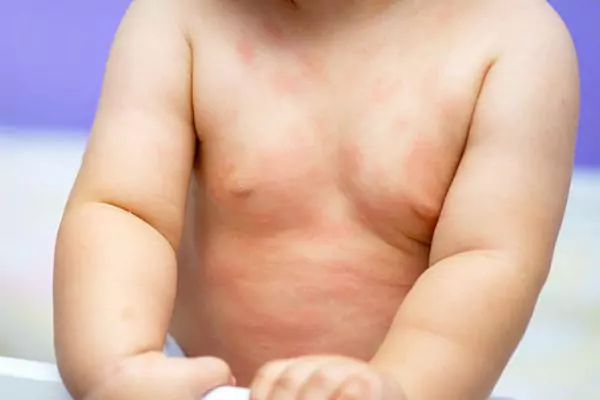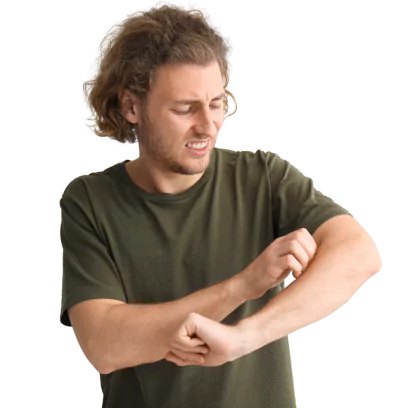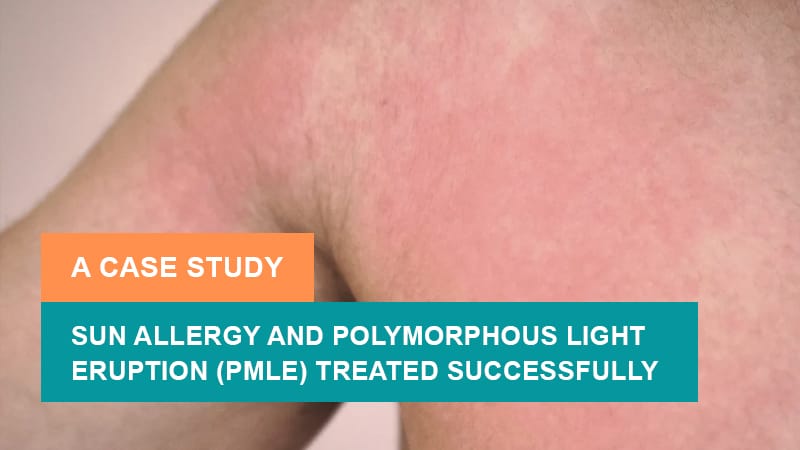On This Page
Introduction
Are you embarrassed by red, bumpy, itchy skin? Such skin is irritating, and painful and may occur due to various causes like exposure to certain plants (poison ivy, for example), allergic reactions to a certain food, medication, chemicals, seasonal changes, insect bite, stress, etc., and is known as skin allergy.
The common dermatological problem occurs when harmless substances mistakenly act as a threat to the immune system and release histamines and other inflammatory chemicals resulting in skin allergy. Both external and internal triggers can result in skin allergies in which various symptoms like swelling of skin, redness, rashes, etc. occur.
The most common types of skin allergy are dermatitis, hives, angioedema, drug-induced skin allergy, etc. In Ayurveda, the main cause of various allergies is the toxin (Ama) produced by low digestive fire (Manda Agni) and results in Vitiated blood (Rakta), Pitta, Kapha, etc. The skin allergy can be co-related to toxin (Ama), Virudha Ahara (food incompatibility), Asatmyata, etc. in Ayurveda which results in various skin allergy symptoms.
Here, you will find the causes, symptoms, diagnosis, and Ayurvedic treatment for skin allergies like Panchakarma Procedures (internal purification of the body), Yoga procedures, Single Herbs, Diet and Lifestyle modification, etc. The treatment helps in removing the toxins (Ama) and balancing the vitiated Dosha, which will certainly help to treat skin allergies.
What is Skin Allergy?
An abnormal response of the immune system to the internal or external stimulus which results in the release of various inflammatory chemicals, histamines, etc. in the body is known as skin allergy.
In skin allergy due to histamine release various symptoms are seen in the skin which are irritating, and painful like swelling, redness, itching, and other dermatological symptoms that depend upon the severity of the reaction and the cause may be acute or chronic.
Skin Allergy – As Per Ayurveda
Allergy has no known etiology, and it is difficult to compare or co-relate skin allergies to one single disease. In Ayurveda, the imbalance of Tridosha leads to the accumulation of toxins (Ama) in the body. The key factors in Ayurveda that result in skin allergy are weak digestive fire (Manda Agni), incompatible food (Viruddha Ahara), Asatmayata (Incompatibility), impure blood (Dushta Rakta), external exposure to certain conditions like dust (Raja), Chemicals, seasonal changes (Ritu Parivartan), etc. Along with this, skin allergies are linked to Kustha Roga (Skin disorders), Sheet Pitta, Udarda, Vicharkika, etc.
Who Gets Affected by Skin Allergy?
Skin allergies can affect anyone including infants, children, adults, and old people but the people who are at high risk of having skin allergies are the individuals having a family history of allergies. People with weakened immunity and those who frequently are exposed to pollen, allergens, climate change, chemicals, etc. are more affected by skin allergies.
Autoimmune disorders and digestive disorders are also key factors that make individuals more prone to skin allergies. Stress is also the leading cause of various kinds of skin allergies.
How Common is Skin Allergy?
A recent survey revealed that around 1 in 5 individuals have skin allergies and contact dermatitis is the most common type of skin allergy that affects the individual, i.e. approximately 20%.
Studies also revealed that among children the most prevalent skin allergy is eczema (atopic dermatitis) i.e. approximately 15%. 16.5 million United States individuals have eczema, and nearly 40% are affected with moderate to severe disease.
In one prevalence study, it was found that 20.2% of the participants reacted to at least one allergen which resulted in skin allergy. Urticaria i.e. hives occur in approximately 20% of people at some point in their lives.
The Common Type of Skin Allergy
- Atopic Dermatitis (Eczema) – The common type of skin allergy that is chronic and causes itchy, red, and inflamed skin. This condition is most common among children.
- Contact Dermatitis – The most common condition that occurs when skin contact with allergens like nickel, latex, cosmetics, etc. is known as contact dermatitis.
- Urticaria (Hives) – The condition caused by insect bites, certain food, medication, etc. which results in raised, itchy welts on the skin are known as urticaria.
- Angioedema – The skin allergy usually occurring with hives which results in swelling beneath the skin, is known as angioedema.
- Drug-Induced Skin Allergies – Certain medications may result in hypersensitivity which results in rashes or hives, etc. is known as drug-induced skin allergies.
- Photodermatitis – An allergic reaction that occurs due to exposure to sunlight is known as photodermatitis.
Causes of Skin Allergy (Modern Perspective)
- Certain foods like dairy, nuts, gluten, and seafood are the primary cause of skin allergies.
- Environmental allergens like dust mites, pollen, and pet dander are big contributors to skin allergies.
- Certain medications like antibiotics and painkillers result in skin allergies.
- Stress and various other emotional factors are also the contributors.
- Genetic predisposition
- Autoimmune diseases
- Insect’ bites like bee stings, and mosquito bites also result in skin allergies.
Causes of Skin Allergy – As Per Ayurveda
- Incompatible food (Viruddha Ahara)d.
- Pitta Dosha imbalance due to intake of excessive pungent, sour, salty food (Katu, Amla, Lavana Rasa Ati Sevana) and other poor lifestyle choices that vitiate Pitta.
- Vitiation of Kapha with lifestyle habits like Day Sleeping (Diva Swapana), Night awakening (Ratri Jagrana), and intake of sweet, sour, and salty food (Madhur, Amla, Lavana Rasa) in excessive amounts.
- Toxin formation (Ama Utpatti) due to weak digestive fire (Manda Agni)
- Blood impurities (Rakta Dusti)
- Genetic inheritance (Beej dosha)
- Excessive exposure to humidity and heat (Ati- Aatap)
- Seasonal changes (Ritu Parivartan)
Symptoms of Skin Allergy
- The most common symptom of skin allergy is redness and itching.
- Raised bumps, also known as hives, can occur in any part of the body.
- In cases of skin allergy like angioedema burning sensation and swelling occur,
- In skin allergies like contact dermatitis irritation or skin peeling occurs.
- Rashes and blister formation
- Dryness
- Oozing is commonly seen in severe skin allergy reactions
Symptoms of Skin Allergy – As Per Ayurveda
- Swelling (Shotha) or puffiness seen in skin allergies like angioedema and urticaria.
- Dryness and flaking (Rukshta) are seen in diseases like eczema due to aggravated Vata.
- Burning sensation (Daha) due to aggravated Pitta
- Inflammation and redness (Raga) due to aggravated Pitta
- Itching (Kandu) due to aggravated Kapha
- Oozing and fluid discharges (Strava) due to aggravated Kapha
Ayurvedic Reference of Skin Allergy
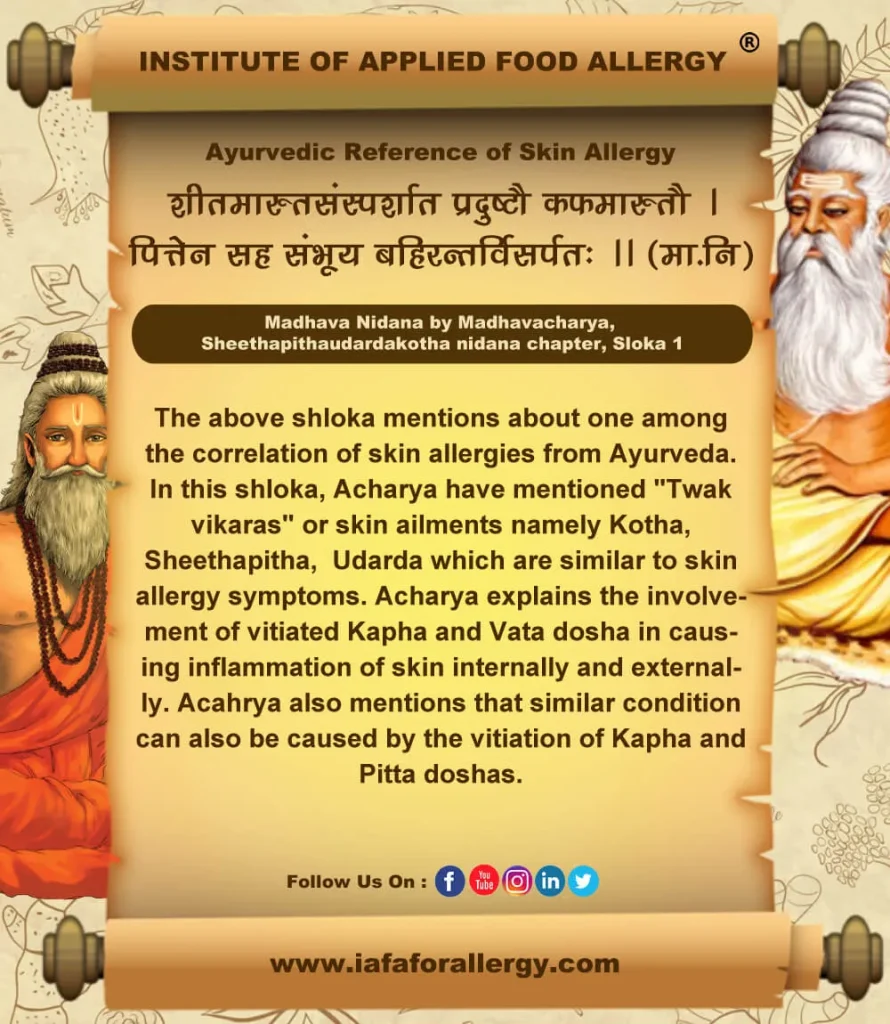
Diagnosis of Skin Allergy
For diagnosis, the Ayurvedic physician will do a detailed examination and observation of the skin texture, lesions, color, discharge, etc. Palpitation of the skin will also be done to assess the tenderness of the skin along with dryness, skin temperature, etc. Along with this detailed analysis of the causative factors, progression, etc. will be done.
Various questions will be asked by the patient related to their exposure to allergens, dietary habits, mental health, lifestyle, etc. The Stool and urine (Mala and Mutra) examination will also be done to check out the toxin accumulation (Ama) in the body. A blood examination (Rakta Pariksha) was done to detect impurities affecting the skin.

“Purification therapies like vamana (emesis), virechana (purgation) and raktamoksha (bloodletting) help in the cure and prevention of recurrence of skin allergy. Dr. Gupta’s Institute of Applied Food Allergy® is successfully managing skin allergies through unique herbal measures along with the classical Ayurvedic methods. Ayurveda is the only natural friendly measure for curing skin allergy completely”.
Reach us today itself and be a part of natural healing!!!
– Dr. Sahil Gupta (B.A.M.S., M.H.A.)
Ayurvedic Allergy Specialist
CEO & Founder of IAFA®
At last, Easier Skin Allergy Management

Trusted by
More than 90,000 Patients

Convenient
at-Home Treatments

9.2 / 10
Customer Satisfaction Score
Ayurvedic Treatment for Skin Allergy
Skin allergy seems to be a manifestation of the Tridosha imbalance, most commonly aggravation of Pitta in Ayurveda. Along with this low digestive fire i.e. Mandagni, accumulation of toxins (Ama) and improper lifestyle and diet are the root cause of skin allergy.
The Ayurvedic treatment for Skin Allergy therefore targets internal disturbances that lead to skin allergy along with the treatment of the external symptoms. In this way, it treats the skin allergy deeply from the roots.
We at IAFA Ayurveda provide effective purificatory and palliative therapies for Skin Allergy Ayurvedic treatment. Dr. Gupta’s IAFA is the perfect destination for Skin Allergy treatment in Ayurveda. The Ayurvedic approach that is used to treat Skin Allergy is as follows:-
Detoxification Therapy (Shodhana Therapy) for Skin Allergy
- Purgation Therapy (Virechana): Therapeutic purgation is done in patients with the help of various herbs to cleanse the blood, liver, and gastrointestinal tract. Purgation therapy is specially done in skin allergies when Pitta Dosha is dominant this will help in reducing inflammation, eliminate toxins (Ama) from liver- gallbladder axis, clear skin, and help in skin allergy conditions like urticaria, eczema, inflammatory rashes, etc.
- Oil Massage (Abhyanga): With Dosha-specific herbs-infused oil (Taila) full body massage (Abhyanga) is done. This helps in soothing irritation, softening tissues, mobilizing toxins (Ama), and eliminating sweat with the help of sudation therapy (Swedana).
- Pouring of Medicated Oil Over the Head (Shirodhara): In this therapy, continuous medicated oil is poured over the forehead. It helps in reducing key triggers of various skin allergies i.e. anxiety and stress. It helps in reducing dryness and scaling by balancing Vata Dosha. Along with this Shirodhara modulates the neuroendocrine system thus supporting the overall healing and balanced immune response.
- Emetic Therapy (Vamana): For expelling excessive Kapha from patients with various skin allergies, controlled therapeutic vomiting is done. Emetic therapy helps in the removal of Kapha Dosha from the body, one of the culprits behind various skin allergies, and thus helps in reducing the thickening and scaling of the skin. By emetic therapy metabolism and digestion improve which prevents the formation of toxins (Ama), alleviates symptoms like itching and skin inflammation, etc.
- Medicated Enema Therapy (Basti): In this process, medicated oil or decoctions are administered through the rectum. This therapy targets Vata imbalance and the symptoms associated with it like dryness and scaling of skin or flaky skin. It overall detoxifies the body and nourishes tissues of the skin.
Herbs for Skin Allergy
Herbs that are useful in Ayurvedic treatment for Skin Allergy includes Haridra (Curcuma longa), Shirish (Albizia lebbeck), Bakuchi (Psoralea corylifolia), Chakra Marda (Cassia tora), Chandana (Santalum album), Nagakesara (Messua ferra), Padmaka (Prunus cerasoides), Mulethi (Glycyrrhiza glabra), Neem (Azadirachta indica), Guduchi (Tinospora cordifolia), Manjistha (Rubia cordifolia), Khadir (Acacia catechu), Karanja (Pongamia pinnata), Chirayata (Swertia chirata), etc.
These herbs possess astringent, diaphoretic, anti-microbial, anti-bacterial, anti-fungal, antihistamine, antipruritic, antioxidant, anti-inflammatory, immunomodulatory, moisturizing, detoxifying, and Tridosha Pacifying properties which make them perfect herbs for treating skin pigmentation, itching, redness, scaling, wound healing, blood purifying, etc. These herbs are top herbs to be used in various skin allergies like atopic dermatitis, contact dermatitis, urticaria, etc.Nimba (Azadiracta indica), etc. are having a great effect on the management of Skin Allergy.
Gem Therapy for Skin Allergy
Various Gemstones are recommended to wear for skin allergies as per Vedic Astrology. These stones can be worn after proper consultation with an astrologer as per your birth date, Zodiac sign, etc. to get only benefits.
As per Astrology, Emerald (Panna), Ruby (Manikya), Blue Sapphire (Neelam), etc. can be worn as per your natal chart if you are suffering from various skin allergies. These stones help in balancing the body’s internal heat, thus reducing inflammation, balancing Dosha, calming the mind, reducing stress, promoting blood circulation, etc.
Diet and Lifestyle Guidance (Pathya-Apathya) for Skin Allergy
According to Ayurveda, if your diet is correct then medicine is of no use because a good gut is considered as the basis of a healthy individual. So, by giving attention to our daily diet, we not only get relief from the diseases from which we suffer but also avoid the upcoming diseases. Below we mention some dietary and lifestyle guidelines that one can follow for various skin allergies:-
What to Do (Pathya) in Skin Allergies?
- Pitta pacifying vegetables like bottle gourd, snake gourd, ridge gourd, ash gourd, bitter gourd, carrot, beetroot, etc should be included in the diet.
- Take plenty of fruits like apples, pears, guava, watermelon, grapes, etc.
- Old grains, wheat, oats, and moong dal should be included in the diet. Individuals must take care that they are not suffering from grain allergies like wheat allergies, etc.
- Various herbs like turmeric, coriander, cardamom, cumin, etc should be added to food.
- Take plenty of fluids like plain water, coconut water, and herbal decoction infused with Guduchi, Haridra, Manjistha, etc.
- Triphala water should be taken during bedtime.
- Take proper sleep of 7-8 hours approximately to allow skin to regenerate.
- Oil massage (Abhyanga) with Kumkumadi Taila, Coconut oil, etc. should be done. This will help in nourishing and healing skin.
- For stress reduction which is the trigger for different kinds of skin allergies, various Yoga Asana, and meditation should be done regularly.
What to Avoid (Apathya) in Skin Allergies?
- Avoid heavy meals (Guru Bhojana) like junk foods, deep fried foods should be avoided.
- Avoid incompatible food (Virrudha Aahara) like the salt of fish intake with milk or a combination of hot and cold food.
- Intake of Madhur (sweet), sour (Amla), and salty (Lavana) food should be avoided.
- Sour fruits should be avoided like oranges as they worsen Pitta-induced symptoms.
- Tomatoes, Brinjal, and excessive spinach aggravate Vata and Pitta should be avoided.
- Alcohol and smoking should be avoided.
- Fermented food should be avoided.
- Anger and anxiety (Krodha and Shoka) should be avoided.
- Exposure to excessive cold and heat (Hima and Aatapa)
- Excessive walking (Ati-Chankrmana) should be avoided
Yoga Asanas for Skin Allergy
Various Yoga Asanas like Child pose (Balasana), Leg-up-the-wall (Viprit Karna Asana), Cobra pose (Bhujangasana), Standing forward bend pose (Uttanasana), Mountain pose (Tadasana), Revolved triangle (Parivrtta Trikonasana), Fish pose (Matsyasana), Corpse pose (Shavasana), Triangle pose (Trikonasana), Seated forward bend (Paschimottanasana), Deep breathing technique (Pranayama) specially Ujjayi Pranayama, Meditation, etc. can be used in various skin allergies.
These Yogic Asanas improve oxygenation of the blood, moderate the immune system, eliminate toxins from the body by stimulating digestive fire, enhance the flow of blood to the skin, encourage the lymphatic system, relieve stress, detoxification, etc.
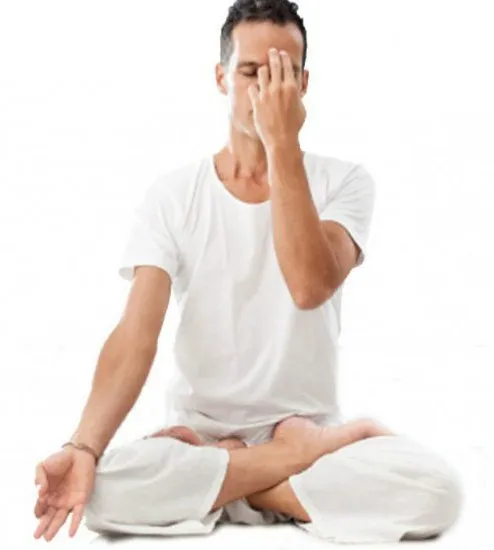
Frequently Asked Questions
Question: How Does Ayurvedic Treatment Remove Skin Rashes and Allergy Itching?
Answer: In Ayurveda, detoxification of the body is done and after that various herbs like Neem, Giloy, Shirisha, etc. are given which balances Dosha, reduces inflammation, and helps in treating skin rashes and itching.
Question: How Does Giloy Benefit from Skin Allergy?
Answer: Giloy exhibits immunomodulatory, anti-inflammatory, blood purifying properties, etc which make it perfect for treating various skin allergies and their symptoms lie rashes, inflammation, etc.
Question: Is Neem Good for Allergies?
Answer: Yes, Neem possesses anti-fungal, anti-bacterial, blood purifying properties, etc. which help to fight against various symptoms of skin allergies like redness, rashes, itching, etc.
Question: Which Ayurvedic Cream is Best for Skin Allergies?
Answer: IAFA 333 Cream is highly recommended for effectively treating skin allergies and providing quick relief from irritation.
Question: How Do You Use Triphala Powder (Churna) for Skin Allergies?
Answer: Triphala Churna can be used internally and externally in various skin allergies. For internal use take 1 teaspoon of Triphala powder (Churna) with warm water and for external use make a paste of Triphala powder with pater and apply over the affected area.
Question: How Do You Use Neem Leaves for Skin Allergies?
Answer: Taking a bath with water infused with fresh Neem leaves or using fresh Neem leaves paste over the affected area is the best way to use Neem for skin allergies.
Question: How Do You Use Neem Juice for Skin Allergies?
Answer: For skin allergies or blood purification, one can use 10- 20 ml of Neem juice mixed with water on an empty stomach in the morning.
Question: How Do You Use Neem Oil for Skin Allergies?
Answer: Neem oil should be diluted with other oils like coconut oil and then should be applied over the allergic area or itchy area for soothing relief.
Question: Are Neem Leaves Good for Skin Allergies?
Answer: Yes, Neem is a detoxifier herb and helps in treating various skin problems like skin inflammation, infections, etc. making it an ideal herb for skin allergies.
Question: How Do You Treat Pitta Skin Allergy?
Answer: The primary treatment for Pitta skin allergy is detoxification therapy i.e. Purgative therapy Virechana). Along with this cooling or cold potency (Sheet Virya) herbs like Manjistha, Chandana, Usheera, and aloe vera should be used. Pitta pacifying diet i.e. taking sweet, bitter, and astringent food (Madhur, Tikta, Kashaya rasa Ahara) and avoiding pungent, sour, and salty food (Katu, Amla, Lavana Rasa Aahra).
Question: How to Treat Pitta Skin Itching?
Answer: Apply cold potency herbs (Sheet Virya) like Sandalwood paste, Aloe vera gel, Neem oil, etc., and drink a herbal decoction of cooling properties i.e. tea infused with manjistha, etc.
Question: How Do You Treat Skin Allergies Naturally?
Answer: Applying soothing herbs like Aloe vera, Neem, Sandalwood, Manjistha, and Lodhra, using cold potency oils like Coconut oil and Kumkumadi oil, and following an anti-inflammatory diet, etc. helps treat skin allergies naturally.
Question: How Do You Get Rid of Skin Allergies Naturally?
Answer: To get rid of skin allergies, the first target is to identify triggers, then avoid allergens, detoxify the body by Panchakarma therapy, improve digestion by use of digestives like Triphala and trikatu, and strengthen immunity by use of various herbs like Turmeric, and Holy basil, Ashwagandha, etc. Avoiding synthetic products and keeping the body hydrated also helps to get rid of skin allergies naturally.
References
- Lakshmi C. Allergic Contact Dermatitis (Type IV Hypersensitivity) and Type I Hypersensitivity Following Aromatherapy with Ayurvedic Oils (Dhanwantharam Thailam, Eladi Coconut Oil) Presenting as Generalized Erythema and Pruritus with Flexural Eczema. Indian J Dermatol. 2014 May; 59 (3): 283- 6. doi: 10. 4103/ 0019-5154. 131402. PMID: 24891661; PMCID: PMC- 4037951.
- Meena, Dr & Panja, Asit & Meena, Dr. (2020). Different Causes of Skin Allergy and Their Management in Ayurveda. International Research Journal of Ayurveda & Yoga. 03. 08- 15. 10. 47223/ IRJAY. 2020. 3801.
- Anand, U., Tudu, C. K., Nandy, S., Sunita, K., Tripathi, V., Loake, G. J., Dey, A., & Proćków, J. (2022). Ethnodermatological use of medicinal plants in India: From ayurvedic formulations to clinical perspectives – A review. Journal of Ethnopharmacology, 284, Article 114744. https:// doi. org/ 10. 1016/ j. jep. 2021. 114744.
- Incorvaia C, Frati F, Verna N, D’Alo S, Motolese A, Pucci S. Allergy and the skin. Clin Exp Immunol. 2008 Sep; 153 Suppl 1: 27- 9. doi: 10. 1111/ j. 1365-2249. 2008. 03718. x. PMID: 18721326; PMCID: PMC- 2515356.
- Gergen, P. J., Turkeltaub, P. C., & Kovar, M. G. (1987). The prevalence of allergic skin test reactivity to eight common aeroallergens in the U.S. Population: Results from the second National Health and Nutrition Examination Survey. Journal of Allergy and Clinical Immunology, 80 (5), 669- 679. https:// doi. org/ 10. 1016/ 0091- 6749 (87) 90286- 7.
- Fonacier LS, Dreskin SC, Leung DY. Allergic skin diseases. J Allergy Clin Immunol. 2010 Feb; 125 (2 Suppl 2): S138- 49. doi: 10. 1016/ j. Jaci. 2009. 05. 039. Epub 2009 Nov 24. PMID: 1993- 2921.
- Novak- Bilic G, Vucic M, Japundzic I, Mestrovic- Stefekov J, Stanic- Duktaj S, Lugovic- Mihic L. IRRITANT AND ALLERGIC CONTACT DERMATITIS – SKIN LESION CHARACTERISTICS. Acta Clin Croat. 2018 Dec; 57 (4): 713- 720. doi: 10. 20471/ acc. 2018. 57. 04. 13. PMID: 31168208; PMCID: PMC- 6544100.
- Salah, S., Taieb, C., Demessant, L., & Haftek, M. (2021). Prevalence of Skin Reactions and Self-Reported Allergies in 5 Countries with Their Social Impact Measured through Quality-of-Life Impairment. International Journal of Environmental Research and Public Health, 18 (9), 4501.
Seek Expert Advice
Dr. Gupta’s IAFA is a pioneering center in the Ayurvedic management of various types of skin allergies. IAFA ensures good results and relief to all suffering from the distressing effects of Skin Allergy.
Visit IAFA and Feel the True Sense of Health through Ayurveda!!! For Personalized Treatment of Various Skin Allergies, Book Your Appointment Now!!!
Was this Page Helpful?
So, IAFA’s Ayurvedic Management of Skin Allergy is Just 3 Steps Away!

01. Connect With Us
Share your history of illness or Book your appointment

02. Consult With Us
Dr. Gupta a certified Ayurvedic Allergist Consultant

03. Root Cause Treatment
Get an accurate diagnosis, medicines, diet & lifestyle change
Real Case Studies – Successfully Treated Patients
Real Case Studies of Successfully Treated Patients from All Around the World by IAFA Ayurveda®

9 Year Old Female Patient Recovered from Chronic Allergic Bronchitis – A Case Study
This case study presents a 9-year-old female patient who has successfully recovered…

12-Year-Old Child Recovered from Sun Allergy and Polymorphous Light Eruption (PMLE) – A Case Study
This is a case study of a 12-year-old child who has successfully…

40-Year-Old Female Patient Recovered from Dyshidrotic Eczema and Onychomycosis – A Case Study
This case study highlights the successful recovery of a 40-year-old female patient…

40-Year-Old Female Patient Recovered from Urticaria and Angioedema – A Case Study
This case study focuses on a 40-year-old female patient who has successfully…
Read More Articles

Bed Wetting (Shayyamutra)
Bedwetting is an embarrassing habit in some children where they are unable…

Attention Deficit Hyperactivity Disorder – ADHD (Vatika Unmada)
Contact IAFA Ayurveda® to get safe and natural remedies for the treatment…

